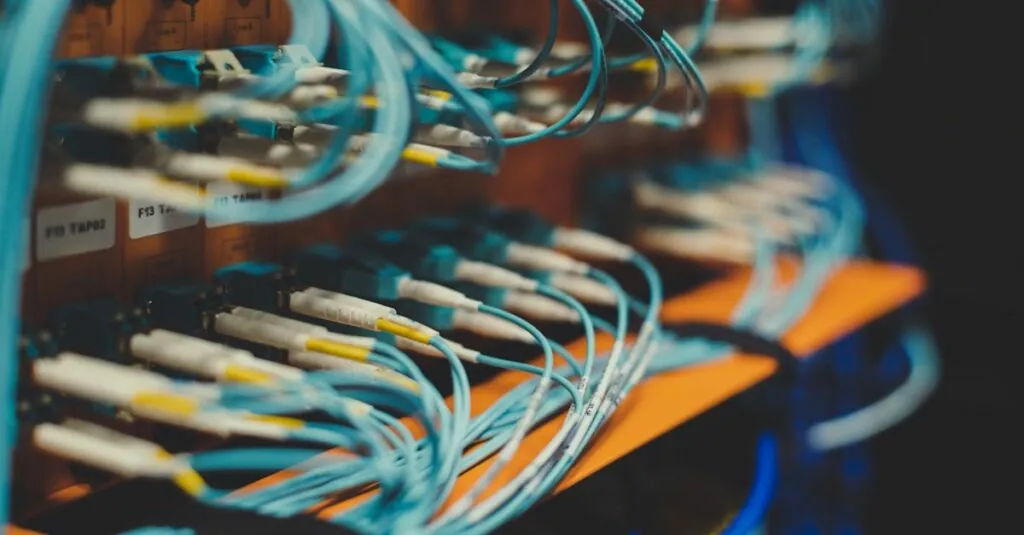In today’s digital jungle, keeping your iPhone secure is like trying to find a needle in a haystack—except the haystack is full of hackers, and the needle is your personal information. Establishing a secure connection to a server isn’t just a techie task; it’s your first line of defense against those pesky cyber threats. Don’t worry; it’s easier than convincing your cat to take a bath!
This guide will walk you through the steps to ensure your iPhone communicates securely with servers, making it a fortress for your data. Whether you’re streaming your favorite show or sending sensitive emails, knowing how to establish a secure connection will give you peace of mind. So grab your iPhone and let’s dive into the world of secure connections—because who doesn’t want their data wrapped in a cozy security blanket?
Table of Contents
ToggleUnderstanding Secure Connections
Establishing a secure connection to a server is vital for safeguarding personal information. Protecting data from cyber threats ensures safer online experiences on an iPhone.
Importance of Secure Connections
Secure connections serve as a barrier between users and potential cyber threats. They protect sensitive information like passwords and banking details from interception. Even casual browsing can expose users to risks if connections aren’t secured. Using secure connections prevents unauthorized access to private data during online activities, whether streaming or sending emails. Trusting these connections builds confidence in using various applications and services.
Common Security Protocols
Several security protocols help create secure connections. Hypertext Transfer Protocol Secure (HTTPS) encrypts data exchanged between browsers and servers. Transport Layer Security (TLS) enhances security during data transmission over networks. Secure Socket Layer (SSL) remains a widely used protocol for establishing encrypted connections, though TLS has largely replaced it. Virtual Private Networks (VPNs) encrypt internet traffic, adding an extra layer of security. Utilizing these protocols ensures user data remains confidential and protected from interception.
Steps to Establish a Secure Connection
Establishing a secure connection on an iPhone involves several important steps. Proper verification of server certificates and configuring network settings significantly enhances security.
Verifying Server Certificates
Verification of server certificates guarantees the authenticity of the server connection. Users should look for HTTPS in the website address. A padlock icon in the address bar also indicates secure communication. Tap the icon to view the certificate details. Checking who issued the certificate ensures it comes from a trusted authority. Inspect the certificate’s expiration date to confirm its validity. These simple actions help prevent connecting to malicious sites.
Configuring Network Settings
Adjusting network settings optimizes the security of the iPhone’s internet connection. Access “Settings,” then tap “Wi-Fi” to review available networks. Prioritize connecting to networks that require passwords for access. When connecting to a new network, validate its security features. Enable the “Private Wi-Fi Address” setting to enhance anonymity. Additionally, consider using a reliable VPN for encrypting internet traffic. These configurations decrease the risk of unauthorized access to personal data.
Using VPNs for Enhanced Security
Using a Virtual Private Network (VPN) offers significant enhancement to iPhone security when connecting to servers. This encryption shields internet traffic from potential threats, effectively securing personal data from unauthorized access.
Choosing the Right VPN Service
Selecting a reliable VPN service is crucial for optimal protection. Look for providers that offer strong encryption standards, such as AES-256. Privacy policies should be clear, allowing for no-logs practices, ensuring that user activities remain confidential. User reviews provide insight into performance and reliability. Free services may pose risks, so prioritize reputable, paid options that feature robust security. Consider compatibility with multiple devices, ensuring seamless usage across platforms. Finally, a reliable customer support system is essential, helping users troubleshoot issues effectively.
Setting Up VPN on iPhone
Configuring a VPN on an iPhone is straightforward. Start by downloading the chosen VPN app from the App Store. Install and open the app, then sign in with your account credentials. Afterward, grant necessary permissions for the app to function properly. Users can select preferred server locations based on their needs, whether for speed or specific access requirements. Activation typically involves toggling a button within the app. Finally, ensure VPN connectivity is established by checking for the VPN icon in the status bar, confirming an active secure connection.
Troubleshooting Connection Issues
Connection issues can arise even with secure settings in place. Identifying and resolving these problems brings peace of mind when using an iPhone.
Common Problems and Solutions
Many users encounter issues like failure to connect, slow speeds, or dropped connections. They can resolve connectivity failures by resetting the network settings found in the iPhone’s settings menu. Slow speeds may stem from using public Wi-Fi; switching to a password-protected network often boosts performance. For dropped connections, checking the Wi-Fi signal strength can help. If the connection remains unstable, disabling and re-enabling Wi-Fi may clear temporary glitches. Regularly updating iPhone software improves compatibility with network protocols, addressing lingering connection issues.
Testing Connection Security
Testing connection security provides reassurance about data protection. Users can verify a secure connection by looking for HTTPS in the website address. A padlock icon in the URL bar further confirms that the connection is secure. For added assurance, visiting websites like SSL Labs allows users to evaluate server configurations. Moreover, running a speed test can identify unexpected interruptions that may hint at less secure connections. Regularly monitoring these factors enhances overall online safety and security while using the iPhone.
Establishing a secure connection to the server on an iPhone is essential for protecting personal information in today’s digital world. By following the outlined steps and utilizing security protocols like HTTPS and VPNs, users can significantly reduce their risk of cyber threats.
Taking proactive measures such as verifying server certificates and prioritizing secure networks enhances overall data safety. Troubleshooting connection issues promptly ensures that users maintain a reliable and secure online experience. With these strategies in place, iPhone users can navigate the internet with confidence, knowing their sensitive information is well-protected.








